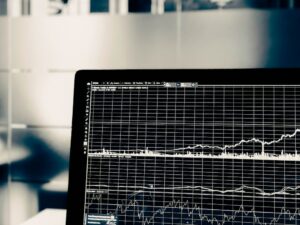The Role of Technical Analysis in Predicting US30 Forex Trends
The US30, also known as the Dow Jones Industrial Average (DJIA), is one of the most widely followed stock market indices in the world. As a forex trader, understanding and predicting the trends in the US30 is crucial for making profitable trading decisions. While there are various approaches to analyzing forex markets, technical analysis plays a significant role in forecasting trends in the US30. This article will explore the importance of technical analysis and the key tools and techniques used in predicting US30 forex trends.
Technical analysis is a method of analyzing financial markets by examining historical price and volume data. It focuses on identifying patterns, trends, and support and resistance levels that can help predict future price movements. Unlike fundamental analysis, which relies on economic, political, and news events, technical analysis is solely based on historical price data.
One of the primary tools used in technical analysis is chart patterns. Chart patterns are visual representations of price movements that can help identify trend reversals or continuations. The most common chart patterns used in technical analysis include:
1. Trendlines: Trendlines are lines drawn on a price chart to connect the swing highs or swing lows. They help identify the direction of the trend and potential areas of support or resistance.
2. Support and Resistance Levels: Support levels are price levels where buying interest is expected to outweigh selling pressure, causing the price to bounce back. Resistance levels, on the other hand, are price levels where selling pressure is expected to outweigh buying interest, causing the price to reverse.
3. Head and Shoulders: This is a reversal pattern that consists of three peaks, with the middle peak (the head) being higher than the other two (the shoulders). It indicates a potential trend reversal from bullish to bearish.
4. Double Tops and Double Bottoms: These are reversal patterns that occur when the price reaches a similar high or low twice before reversing. They indicate a potential trend reversal.
In addition to chart patterns, technical analysts also use various technical indicators to analyze forex trends. Technical indicators are mathematical calculations based on price and volume data that provide insights into market conditions. Some commonly used technical indicators for predicting US30 forex trends include:
1. Moving Averages: Moving averages are trend-following indicators that smooth out price data to identify the overall direction of the trend. Traders often use the 50-day and 200-day moving averages to identify long-term trends in the US30.
2. Relative Strength Index (RSI): The RSI is a momentum indicator that measures the speed and change of price movements. It helps identify overbought and oversold conditions, which can indicate potential trend reversals.
3. MACD: The Moving Average Convergence Divergence (MACD) is a trend-following momentum indicator that shows the relationship between two moving averages of a security’s price. It helps identify potential trend reversals and generate buy or sell signals.
4. Fibonacci Retracement: Fibonacci retracement levels are horizontal lines drawn on a price chart to indicate potential support and resistance levels. They are based on the Fibonacci sequence and are used to identify potential entry and exit points.
While technical analysis is a valuable tool for predicting US30 forex trends, it is important to note that it is not foolproof. Market conditions can change rapidly, and technical analysis alone may not always provide accurate predictions. Therefore, it is essential to combine technical analysis with other forms of analysis, such as fundamental analysis and market sentiment, to make informed trading decisions.
In conclusion, technical analysis plays a crucial role in predicting US30 forex trends. By analyzing historical price and volume data, traders can identify patterns, trends, and support and resistance levels that can help predict future price movements. Chart patterns and technical indicators are valuable tools used in technical analysis, providing insights into market conditions and potential trend reversals. However, it is important to remember that technical analysis should be used in conjunction with other forms of analysis for a comprehensive understanding of the market.





